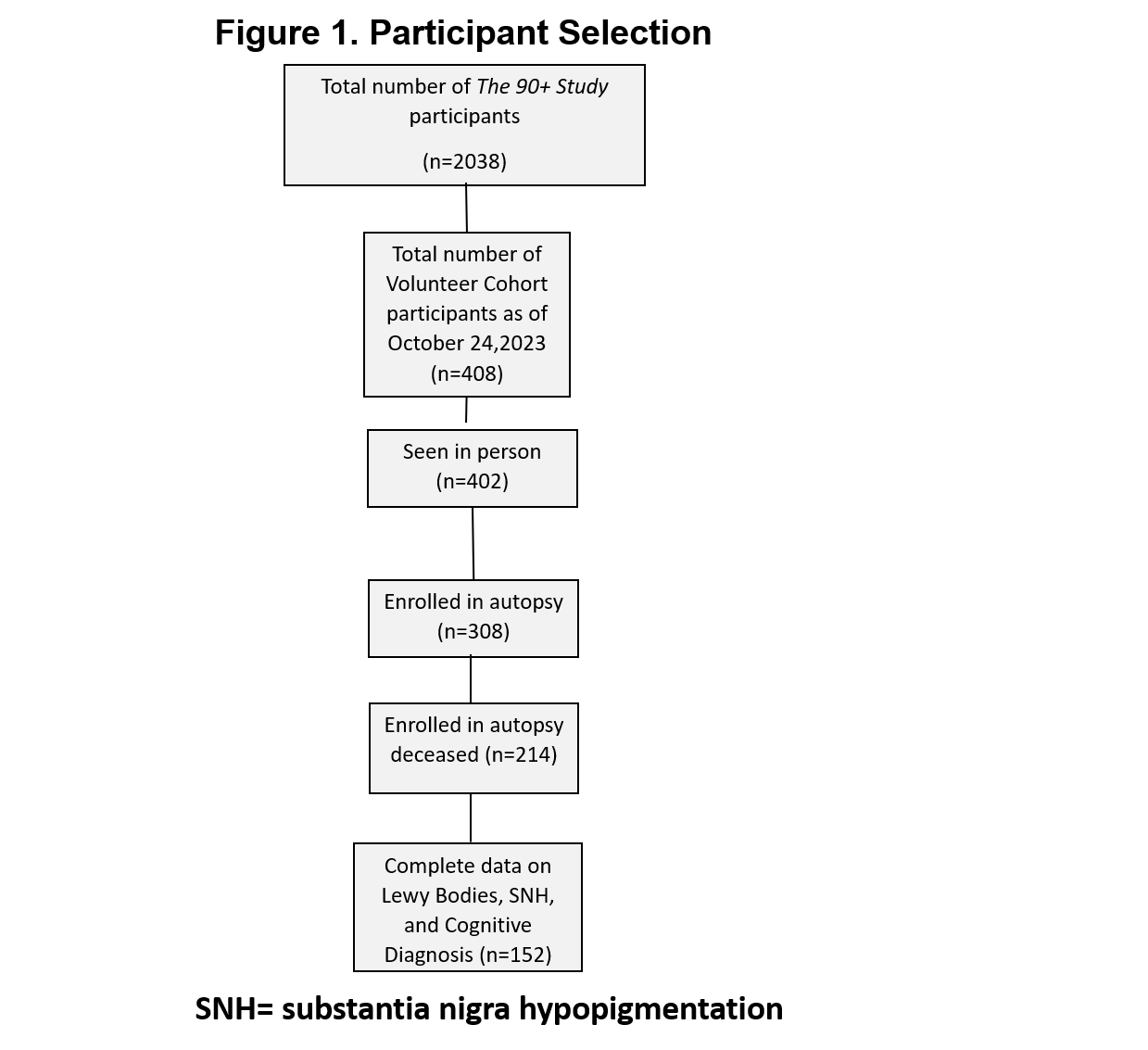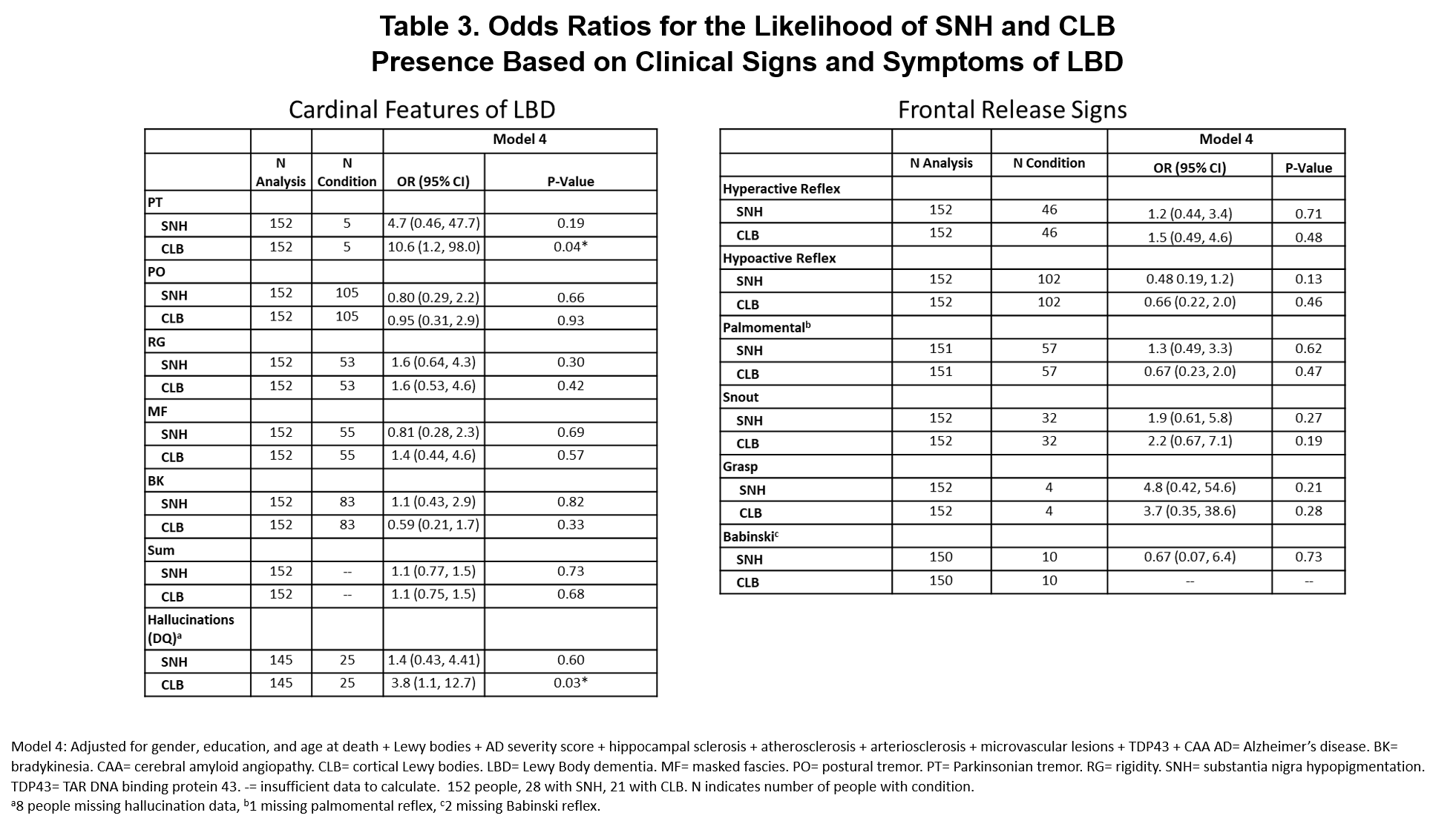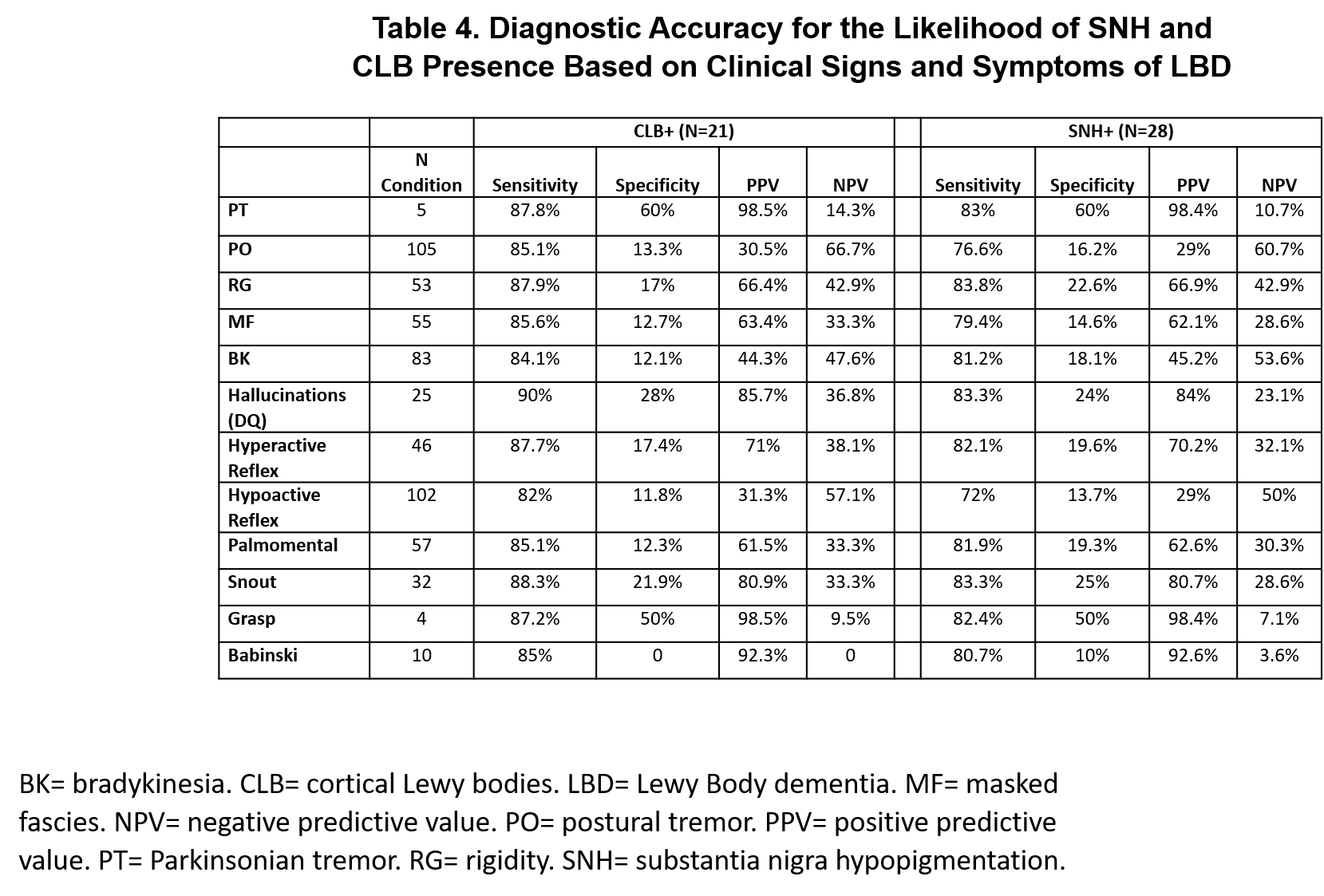Objective: To improve clinical diagnostic accuracy of Lewy Body Dementia (LBD), we assessed if frontal release signs are a useful screening tool for cortical Lewy Bodies (CLB) presence and if cardinal features (parkinsonism and hallucinations) of LBD are specific to substantia nigra hypopigmentation (SNH) in the Oldest-old (ages >90).
Background: The Oldest-old have the highest rates of dementia [1] and improving diagnostic accuracy for LBD may lead to improved symptom management. Cardinal features of LBD are thought to be due to SNH [2], but the contributions of CLB to these signs are unknown.
Method: Participants were from the 90+ Study, a prospective study of aging and dementia in the oldest-old. We analyzed the volunteer subset (not part of the Leisure World Cohort study) [3] (fig. 1 as they are a contemporary population who were assessed with the National Alzheimer’s Coordinating Center (NACC) Neuropathology form version 10 or higher. Neurological examinations were performed every 6 months. Clinical signs were considered present if noted on > 2 occasions. SNH was considered present if moderate or severe. CLB were considered present for a Braak stage > 4. Cardinal features included Parkinsonian tremor (PT), masked fascies, rigidity, bradykinesia, and hallucinations. Frontal release signs included snout, grasp, palmomental, and Babinski reflexes. We calculated odds ratios (OR) and diagnostic accuracy for the likelihood of presence of SNH and CLB in relation to clinical signs using logistic regression models adjusted for age, sex, education, and other neuropathological changes (sup. fig. 1).
Results: For the 152 participants, the mean age was 97, 59% were female, 57% had > college education, 18% had SNH, and 14% had CLB (table 1). Co-occurrence of SNH and CLB was 22% (6% of total cohort) (table 2). No features were associated with SNH. PT (OR 10.6, 1.2-98.0) and hallucinations (OR 3.8, 1.1-12.7)) were associated with a higher likelihood of CLB (table 3). PT, grasp, and Babinski reflexes had high Positive Predictive Values (>90%) for both SNH and CLB, but poor Negative Predictive Values (<15%) (table 4).
Conclusion: Hallucinations, PT, grasp, and Babinski reflexes may be useful screening signs for CLB presence. Cardinal features were not associated with SNH, suggesting they are not specific to dopaminergic loss.
Figure 1
Table 1
Table 2
Table 3
Table 4
Supplemental figure 1
References: 1. Kawas CH, Kim RC, Sonnen JA, Bullain SS, Trieu T, Corrada MM. Multiple pathologies are common and related to dementia in the oldest-old: The 90+ Study. Neurology. 2015;85(6):535-542. doi:10.1212/WNL.0000000000001831
2. Jankovic J. Parkinson’s disease: clinical features and diagnosis. J Neurol Neurosurg Psychiatry. 2008;79(4):368-376. doi:10.1136/jnnp.2007.131045
3. Melikyan ZA, Greenia DE, Corrada MM, Hester MM, Kawas CH, Grill JD. Recruiting the Oldest-old for Clinical Research. Alzheimer Dis Assoc Disord. 2019;33(2):160-162. doi:10.1097/WAD.0000000000000260
To cite this abstract in AMA style:
R. Rajmohan, Z. Al-Darsani, N. Phielipp, T. Montine, M. Corrada, C. Kawas. Accuracy of Clinical features for Substantia Nigra Hypopigmentation and Cortical Lewy Body Presence in the Oldest-Old: The 90+ Study [abstract]. Mov Disord. 2024; 39 (suppl 1). https://www.mdsabstracts.org/abstract/accuracy-of-clinical-features-for-substantia-nigra-hypopigmentation-and-cortical-lewy-body-presence-in-the-oldest-old-the-90-study/. Accessed December 25, 2025.« Back to 2024 International Congress
MDS Abstracts - https://www.mdsabstracts.org/abstract/accuracy-of-clinical-features-for-substantia-nigra-hypopigmentation-and-cortical-lewy-body-presence-in-the-oldest-old-the-90-study/






